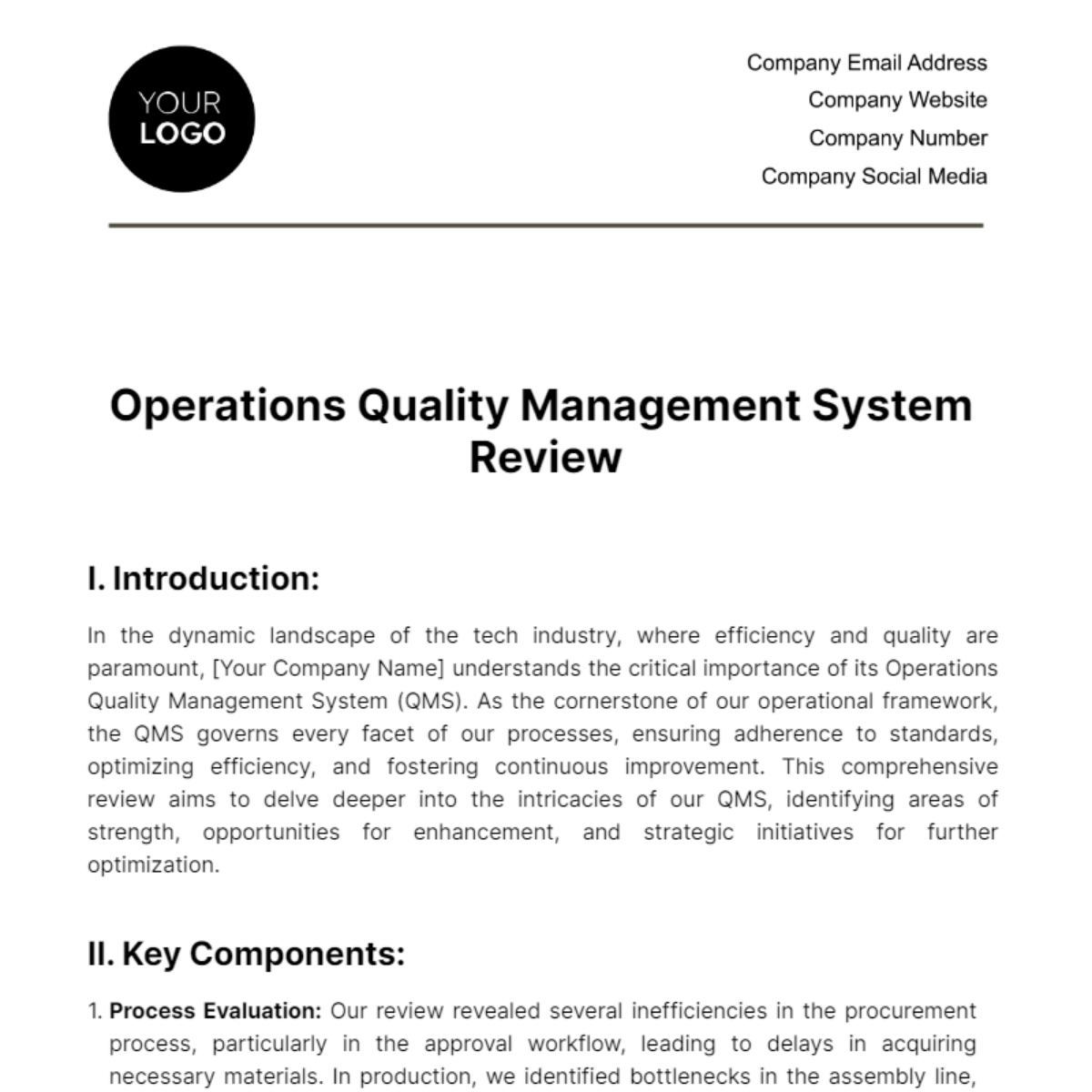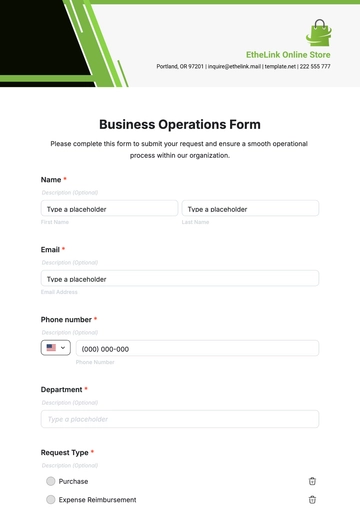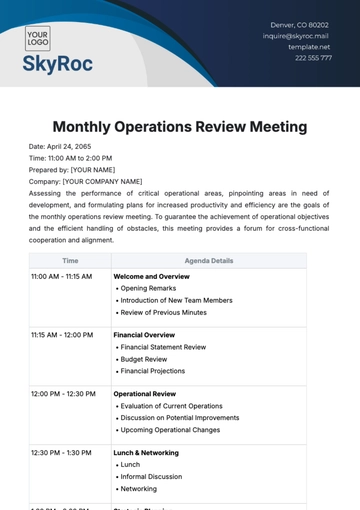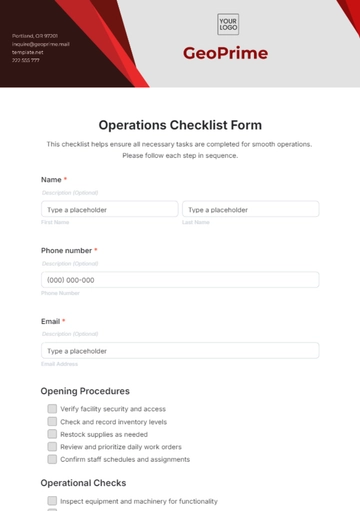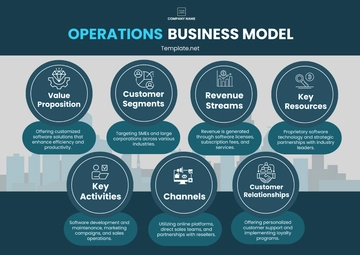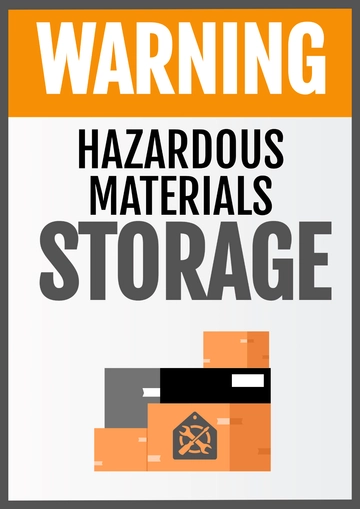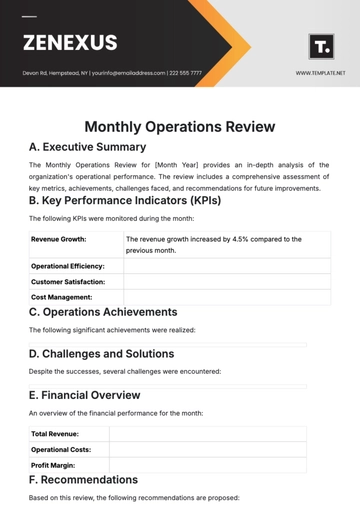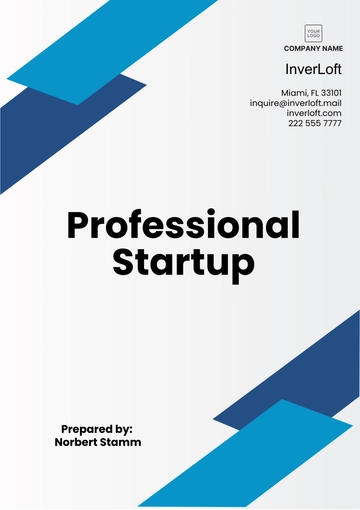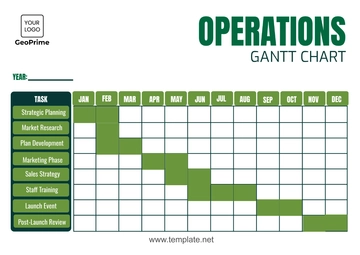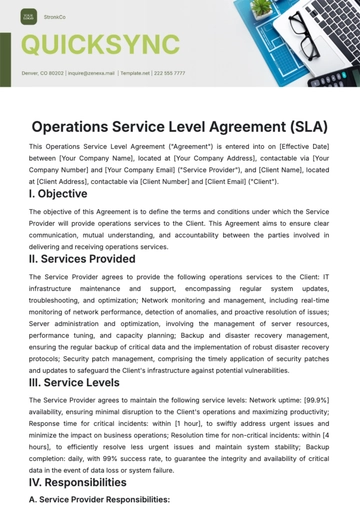Operations Quality Management System Review
I. Introduction:
In the dynamic landscape of the tech industry, where efficiency and quality are paramount, [Your Company Name] understands the critical importance of its Operations Quality Management System (QMS). As the cornerstone of our operational framework, the QMS governs every facet of our processes, ensuring adherence to standards, optimizing efficiency, and fostering continuous improvement. This comprehensive review aims to delve deeper into the intricacies of our QMS, identifying areas of strength, opportunities for enhancement, and strategic initiatives for further optimization.
II. Key Components:
Process Evaluation: Our review revealed several inefficiencies in the procurement process, particularly in the approval workflow, leading to delays in acquiring necessary materials. In production, we identified bottlenecks in the assembly line, causing a slowdown in output. Additionally, our distribution process lacked optimization, resulting in excessive transit times and higher logistics costs.
Compliance Check: We found that while most of our operational processes aligned with industry standards and internal policies, there were instances of non-compliance with specific regulatory requirements. Addressing these discrepancies will be critical to mitigating regulatory risks and maintaining our reputation for quality and integrity.
Risk Assessment: Through our assessment, we identified several potential risks within our QMS, including vulnerabilities in our supply chain due to overreliance on a single supplier. Quality control issues were also noted, particularly in product testing procedures. Furthermore, the lack of a robust contingency plan for unforeseen disruptions poses a significant risk to our operations.
Performance Metrics: Analysis of our performance metrics revealed declining efficiency in certain areas, such as a decrease in production output by [X%] compared to the previous quarter. Additionally, customer complaints regarding order fulfillment times highlighted areas for improvement in our distribution process.
Training and Development: While our training programs have been effective in imparting necessary skills to employees, there is room for improvement in addressing emerging challenges and evolving industry trends. Furthermore, the assessment revealed a need for specialized training in new technologies adopted within our operational processes.
Customer Feedback: Customer feedback highlighted recurring issues with product quality and delivery times. Delays in responding to customer inquiries and resolving complaints were also noted, indicating a need for enhanced customer service training and process improvements.
III. Recommendations:
Streamline Processes: Identify and eliminate redundancies, streamline workflows, and optimize resource allocation to enhance operational efficiency.
Enhance Documentation: Improve the clarity, accessibility, and comprehensiveness of documentation within the QMS to facilitate seamless execution of operational processes.
Invest in Technology: Embrace cutting-edge technologies such as automation, data analytics, and digital platforms to modernize our operations and drive efficiency gains.
Continuous Training: Prioritize ongoing training and development initiatives to equip our workforce with the skills and knowledge needed to excel within our QMS.
Risk Management Strategies: Develop robust risk management protocols to proactively identify, assess, and mitigate potential risks across our operations.
Feedback Mechanisms: Establish robust mechanisms for soliciting and incorporating feedback from employees, customers, and stakeholders to drive continuous improvement and enhance operational effectiveness.
IV. Conclusion:
The Operations Quality Management System Review has yielded insightful findings that will shape the trajectory of [Your Company Name]'s operational excellence journey. We have identified several key areas for improvement, including the streamlining of procurement processes to reduce lead times by [30%], enhancing documentation practices to improve clarity and accessibility, and leveraging technology solutions such as automation to drive efficiency gains. Moreover, the review highlighted the need for continuous training initiatives to bolster employee competency levels and mitigate operational risks effectively. By embracing these findings and implementing strategic recommendations, we are poised to fortify our operational resilience, elevate quality standards, and cement our position as a leader in [industry].
[Your Name]
[Your Company Name]
[Your Company Email]
Operations Templates @Template.net
